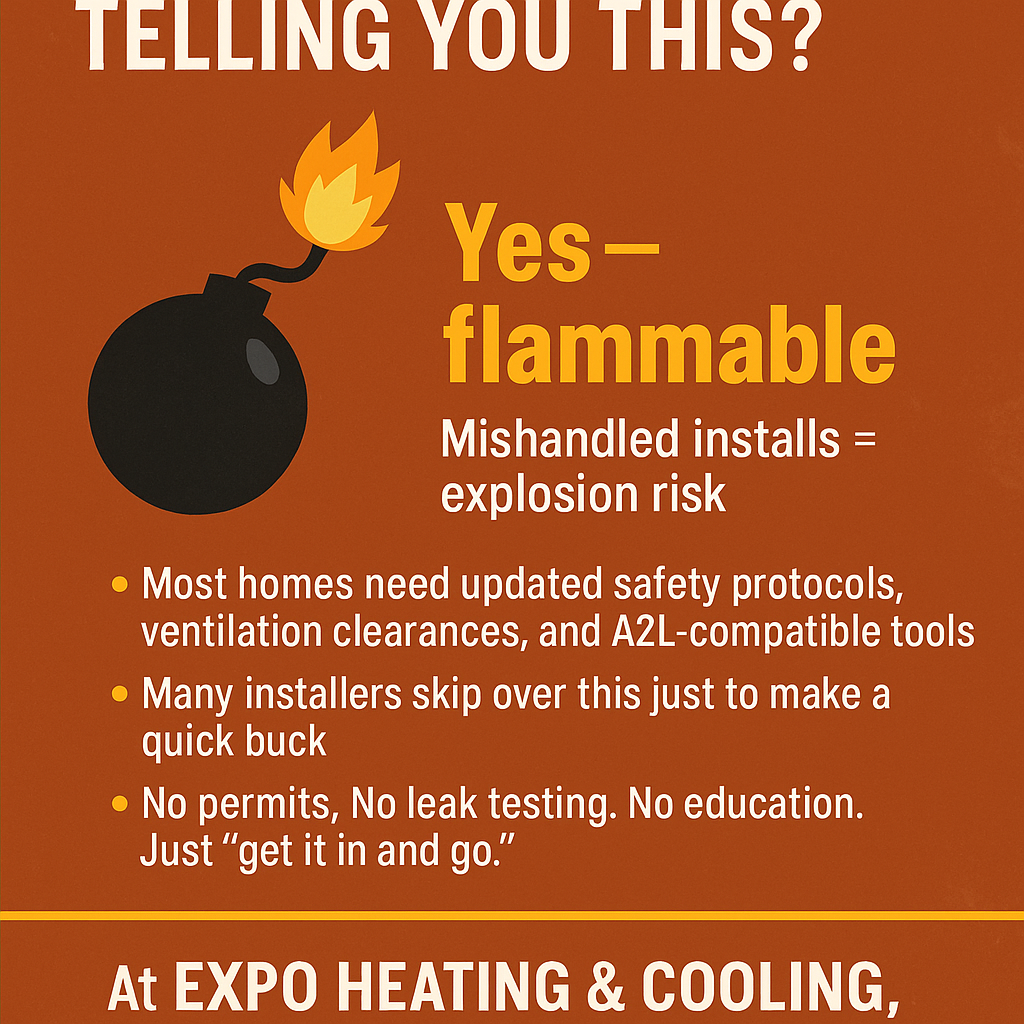
As the HVAC industry evolves, the phase-out of R-410A has led to the rise of two innovative refrigerants: R-32 and R-454B. With stricter environmental regulations and a growing emphasis on sustainability, homeowners and contractors alike are seeking efficient and eco-friendly alternatives. These refrigerants not only promise lower Global Warming Potential (GWP) but also offer unique advantages and safety considerations. In this blog post, we'll delve into the key differences between R-32 and R-454B to help you determine which refrigerant is better for your new HVAC system.
Understanding the nuances of R-32 vs. R-454B is essential for making an informed decision about your comfort and environmental impact. We’ll explore the implications of their GWP ratings, safety profiles, and efficiency levels, ensuring you have all the information you need to choose the right refrigerant for your home. Whether you're planning for a new installation or considering a system replacement, knowing the strengths and weaknesses of these refrigerants will pave the way for optimal performance and safety.
Understanding the transition: R-32 vs. R-454B and the phasing out of R-410A
As the HVAC industry moves towards more sustainable practices, the phase-out of R-410A is a significant step in reducing environmental impact. R-410A, long a standard refrigerant in air conditioning systems, has a high Global Warming Potential (GWP) of over 2,000, leading to increased regulatory pressure. In response, manufacturers are focusing on R-32 and R-454B as viable alternatives that not only minimize GWP but also maintain energy efficiency levels. This transition is set to accelerate in 2025, aligning with global climate goals and consumer demand for greener technology.
In the battle of R-32 vs. R-454B, it's essential for homeowners and builders to understand each option's characteristics. R-32 boasts a GWP of approximately 675, while R-454B presents an even lower GWP of around 466, making it an appealing choice for those prioritizing environmental responsibility. Both refrigerants contribute to improved energy efficiency compared to R-410A, providing adequate refrigeration capabilities for new HVAC systems. As you explore your options, it's crucial to consider which refrigerant best aligns with both your environmental values and the performance needs of your home.
Safety first: Comparing flammability and handling risks of R-32 and R-454B
When evaluating R-32 vs. R-454B, safety is a crucial factor, especially regarding flammability. R-32 carries an A2 classification, which indicates that it is flammable. This means that while it can ignite under certain conditions, it requires specific circumstances to do so. R-454B, on the other hand, is classified as A2L, which denotes that it is mildly flammable. The lower flammability rating of R-454B makes it a safer option for residential HVAC applications in the United States. This classification means R-454B poses less risk in everyday use, leading to increased peace of mind for homeowners.
Proper handling and installation procedures are essential, regardless of the refrigerant you choose. R-454B's milder flammability makes it easier for technicians to work with since it operates at pressures similar to R-410A. This familiarity means HVAC professionals can employ established tools and techniques during installation and maintenance. However, it's important to recognize that both refrigerants demand adequate ventilation, leak detection systems, and trained personnel for safe use. As you weigh R-32 vs. R-454B for your new HVAC system, understanding these safety considerations can significantly influence your decision.
Making the right choice: Factors to consider in the R-32 vs. R-454B debate for your new HVAC system
When deciding between R-32 and R-454B for your new HVAC system, you must weigh several key factors that align with your specific needs and circumstances. First, consider environmental impact. R-454B, with its lower Global Warming Potential of approximately 466, presents a more eco-friendly option compared to R-32’s GWP of around 675. If minimizing your carbon footprint is a priority for you, R-454B may be the better choice. However, R-32 has proven to be marginally more efficient in heat transfer, which could translate to lower energy bills and enhanced performance for your home cooling needs.
Additionally, think about safety and handling. R-454B is classified as “mildly flammable,” making it a safer option for residential applications, particularly in the U.S. R-32, being more flammable, requires stricter safety protocols during installation and maintenance. Make sure to discuss these considerations with your HVAC contractor, who can recommend which refrigerant might align better with your home’s requirements while also adhering to local regulations. Ultimately, choosing the right refrigerant involves balancing efficiency, safety, and environmental impact to find the best fit for your new HVAC system.
If you’re in Spring, The Woodlands, Tomball, Cypress, Conroe, or Houston, we’re your trusted local HVAC team. Whether you go with R-32 or R-454B, we’ll guide you through your options with safety, efficiency, and comfort in mind.
👉 Call Expo Heating & Cooling at 346-445-6224
🌐 Visit: www.expoheatingcoolinginc.com
Expo Heating & Cooling provides expert AC installation and repair in Spring, TX and surrounding areas including The Woodlands, Conroe, Tomball, Cypress, Magnolia, and Houston. From same-day AC repairs to full system replacements with Carrier, Trane, and more — we deliver fast, honest, and professional HVAC service. We offer free estimates, $0 diagnostic with repair, and 0% financing on new installs. Call now to schedule service with a local team you can trust